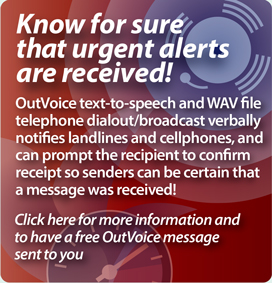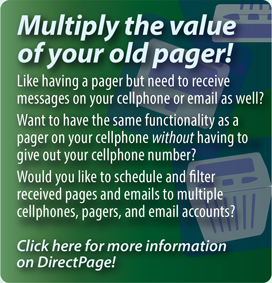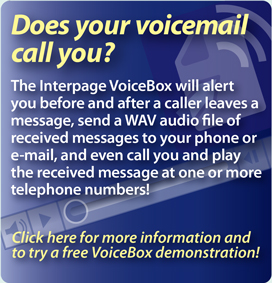 Verizon Dropped Call List: An
Updated List of Locations, Places, Areas and Roads where Calls on Verizon
Wireless Drop, are Disconnected, have Poor Coverage, or Experience Service
Difficulties
Verizon Dropped Call List: An
Updated List of Locations, Places, Areas and Roads where Calls on Verizon
Wireless Drop, are Disconnected, have Poor Coverage, or Experience Service
Difficulties
Last Update: 10/01/2018
This list is intended to provide a consolidated reference to a series of
posts, messages, and other observations as to dropped calls,
disconnects/poor handoffs, and cellular service and feature issues with
Verizon Wireless's cellular (voice) service in the US.
This page previously contained a list of Verizon Express Network
1XRTT/EvDO(3G) drops, handoffs, and service issues, but as each list
was/is getting long, and with the introduction of 4G/LTE, we have decided
to move the list to a separate page, which covers only Verizon Wireless 3G/4G Data
Connection Drops and service problems.
[ Wirelessnotes Home
| Interpage
| Cellular Carrier Comparison
| Verizon Problems/Drops Overview/General
| Criteria for Inclusion
| Disclaimer
| Verizon Cellular Drops List
| Corrected/Remedied Issues
| Verizon 3G/4G Data Drops
| Verizon DC Metro Drop Map
| Verizon Analog Drops
| Sprint Dropped Call List
| Nextel Dropped Call List
| AT&T Wireless Call Drop List
| TMobile Dropped Call List
| Cellular Audio Delay/Latency
| Contact WirelessNotes ]
Of the major US carriers (from our experience), Verizon offers the fewest
call drops/disconnections (hereinafter collectively refered to as "drops"
unless otherwise specified), and has the most extensive and penetrating
network for wireless voice and data services. This is especially true for
customers outside of urban areas, which tend to be more densely covered by
all major carriers and even some regional ones, as well as those who drive
longer distances and need reliable and generally uninterrupted (ie, "drop
free") calling.
This is not to say that Verizon is without its faults -- quite to the
contrary: The sound quality of the CDMA protocol which they use is in our
experience, on average, worse than GSM (which is utilized by AT&T and
T-Mobile) and suffers from greater distortion and delays in conveying
normal-sounding coversation (see the Digital Cellular Latency Page for
a discussion of voice delays and latency in cellular telephony).
Additionally, Verizon's customer service and upper management can be at
times ossified and stodgy, and suffers from parochialism and in-fighting
between the various (seemingly Balkanized) companies which were absorbed
into Verizon during the Verizon/GTE/PrimeCo merger, and subsequent
mergers with carriers such as Alltel. These internecine bickerings can
manifest itself in the outward customer service experience which customers
receive, which can make the resolution of otherwise relatively simple
issues more protracted and complex as the case meanders through the rough
waters of the various departments Verizon fighting amongst themselves.
Additionally, and more generally, Verizon seems to feel that there is no
one better than they are in terms of reliable service and coverage (which
in our experience is true generally), and thus they don't have to try 'as
hard' to retain customers who are disatisfied with some aspect of their
Verizon service and/or charges.
Thus, based on our experience in terms of their technical
proficiency, Verizon Wireless offers significantly more reliable coverage
and larger service areas. Unfortunately, the same foundations as
the old "wireline" carrier in most markets which they serve (explained
below) which result in their superior coverage also serve as an
institutional impediment to better, more responsive and flexible customer
service.
In part, this appears to be due to their long-standing presence in most of
their markets and initial mandate to build out their analog systems to
cover their licensed areas, which led to significantly broader and better
(RF/dB-wise) coverage than many of their digital-only competitors. BAMS,
GTE, Airtouch, etc., all had regional service areas to cover, and spent
their assets and time covering these areas to become the (generally)
superior carrier in their respective markets.
For example, NYNEX Mobile in the 00022 market (NYC Metro) was one of the
worst major carriers in or around 1992, with drops along every block on
Manhattan, dead areas in all of the suburban areas, and was being rapidly
eclipsed by McCaw/AT&T Wireless in terms of service quality and coverage
area. Even though they were the licensed "B" (wireline) carrier, they for
whatever reason chose to under-invest in their cellular architecture.
(Interestingly, it was only a problem in the ex-NY Telephone market; the
New England Telephone component of NYNEX had markedly better cellular
coverage.)
When Bell Atlantic Mobile, the mid-Atlantic "B"/wireline carrier, took
over NYNEX Mobile's properties (which was prior to the full merger of
NYNEX into Bell Atlantic), in less than a year service the NYC/00022
market showed a dramatic improvement, and a few years later approached the
service level of the initial Bell Atlantic markets of Philly (00008) as
Baltimore/DC (00018), or on the West Coast, to the generally high level of
service offered by the SF Bay area B carrier GTE Mobilnet.
The same pattern was repeated in Connecticut/Western Mass (00119), one of
BAMS's A-side markets acquired from Metro Mobile. BAMS took the 00119
system from a clear inferior to SNET (00088, Cingular, now ATTWS) and is
now generally ahead coverage-wise and in terms of fewer drops and
distortions of voice quality. For years SNET had better coverage and many,
many fewer drops, and from observations in the areas where it is licensed
to cover (I.E., all of CT except for US Cellular's (ex-Cingular,
ex-AT&T/Cingular's small "nuisance" A/01011 market in Litchfield County),
had vastly superior service to Metro Mobile. BAMS reversed this in a few
years and SNET/Cingular/AT&T were still playing "catch up" with Verizon
for many years and even to this date Verizon has superior coverage in most
areas of Connecticut and Western Mass.
As a result, it is the opinion of the authors of this page that generally,
if Verizon (and especially the former BAMS or GTE Mobilnet operator) is
the local carrier, they will provide better to significantly better
coverage than their competing A/B side carriers and significantly better
coverage than the digital-block carriers like Nextel/Sprint (+affiliates),
T-Mobile, and ATTWS/Cingular consolidation market operators etc.
Additionally, in certain markets, such as New York (00022) or DC (00018),
Verizon is the only carrier to offer service in some areas, such as
the in the Washington DC Metro's subway tunnels (limited between-station
coverage is only available on Verizon, for example; all the rest have
coverage at most stations to some degree), or "river to river" service via
the Hudson Tubes to Penn Station to Long Island on Amtrak, NJ Transit, or
the LIRR in New York City. (Sprint and other carriers may piggyback/roam
on Verizon's service, or some other more limited degree of coverage, as
the Nextel side of Sprint in terms of service IN Penn Station, but no one
other than Verizon will allow customers to place a call on 8th Ave. before
entering Penn Station, get on a non-subway train heading east or west, and
continue the call while dwelling in the station, through either set of
tubes, all the way to a destination in New Jersey, Long Island, or
Connecticut (via the PCRR Hell's Gate route).
(A complete list with a map of observed Verizon cellular and data drops on
the Washington DC Metro rail system is available
here.)
This is not to say that Verizon Wireless covers all similar facilities
better than their competitors; Grand Central Terminal's lower level and
the Park Ave. air-rights tunnel have noticeable gaps in Verizon's coverage
where AT&T Wireless is much better - even as of late 2015 Verizon has very
poor coverage on many of Grand Central's lower level platforms and nothing
under the Park Ave tunnel. Generally, however, Verizon does a better job
of providing "through", drop-free service is a good number of transportation
facilities where Sprint/Nextel, AT&T Wireless, and T-Mobile do not).
(A minor caveat: Verizon's digital service is based on CDMA, which while
adequate, seems to have a greater degree of delay and "digitized" sound
than well-implemented GSM. In other words, using a CDMA phone from
Verizon (or the Sprint side of Sprint/Nextel) will have a somewhat
lengthier delay from the time a caller says something into a phone that
the recipient hears it than the GSM counterpart. This effect is even more
noticeable on mobile-to-mobile calls and mobile-to-VoIP calls (for mopre
details, see this discussion of cellular and Voice-over-IP
latency/voice delays. Thus, if you like/need your cellular service to
closely approximate landline (or good analog cellular) service, with no
noticeable delay and/or no less distortion, choose a good GSM carrier as
CDMA will likely prove more of a disappointment.)
Although Verizon is generally superior in terms of coverage and
propagation, there are a number of notable areas where Verizon routinely
drops and/or has poor/unacceptable voice quality. Many of these are
inter-system handoffs (a vestigial problem from the consolidation of their
networks, which is generally not shared by the newer digital license
holders who have set up "borderless" regional networks). The Verizon Cellular Drop List below details these continuing
problem areas on a state-by-state basis.
The extent of the list (as compared to other lists which we maintain)
should not be construed as evidence of inferior coverage by
Verizon Wireless; it is due to their superior coverage that we
utilize them extensively as our primary carrier, and thus have more
experience with them than with other carriers as to where their service
experiences drops and other difficulties. As a general rule, however,
Verizon has far fewer drops, for both voice and data, and no
other carrier comes close to Verizon in this respect.
Overall, the Verizon Digital Cellular Dropped Call List will hopefully
serve as a central source where such drop information may be collected,
posted, and utilized in furtherance of future service improvements by
Verizon.
The criteria for a drop being "worthy" :) of getting posted are:
Certain subway systems (such as DC Metro) are organized by line and are
considered subcategories within the primary city in which they
are contained.
Please feel free to submit your dropped call experiences with Verizon
Wireless which meet the above guidelines so that we can provide a more
comprehensive list. Contact information for this list is provided at the
end of this page.
Additionally, if you feel that an item is incorrect, please let us know
the specifics of your experiences in the given area so we can test it and
modify the list accordingly.
Thanks!
Disclaimer/Note: The authors have nothing to do
with Verizon other than using a few of their phones and/or data products
as paying subscribers. While we will try to keep these lists current,
you should test them out for yourself and not use this as a dispositive
and authoritative source of information as to Verizon's cellular service
(or lack thereof). In other words, these are just our and/or other's
observations -- we try to be accurate, but we make no representations
other than what we have observed (and if others notice we are wrong about
a given drop, please mail us so we can test the drop and modify the list
accordingly.)
Verizon Cellular Dropped Call List by State
California
Connecticut
Delaware
Maryland
Massachusetts
New Hampshire
New Jersey
New York
Pennsylvania
Rhode Island
Vermont
Virginia
Washington DC
Note: Voice coverage on Metro, although never great, was in many ways
better when analog service was available, and "through coverage" from
station to station generally worked well in many segments of the system.
Additionally, ATT Wireless customers could drop to analog and utilize the
Verizon Wireless DC Metro system. After analog was removed, no roaming
(even on Sprint postpay it seems) occurs on the Verizon system, and calls
tend to drop in all cases in the tunnels between systems. There does not
seem to be a single case of coverage not dropping between any of
the underground stations/segments in the DC Metro any longer, and reliable
voice coverage is generally relegated to stations only, like most of the
other carriers. Effectively, Verizon Wireless' voice coverage in the DC
Metro system has taken a step _back_ under digital-only coverage, and
despite repeated inquiries with them about large segments of the
northwestern leg of the Red Line which used to have coverage between
stations and now does not, nothing has been done. It is (or was)
possible to cover the tunnels properly and have decent "through" coverage
as evidenced by Verizon's analog service, so it is unclear why they are
not willing to provide that level of service currently as of late 2014.
Corrected Problems
The following were problem drop areas but have apparently been
corrected and/or no longer suffer from regular/repeated drops.
Connecticut
Contacting WirelessNotes.org
We may be reached via:
Back to Main Wireless Notes Page
Last modified and �: 10/01/2018
As of 10/01/2018, this page has moved to: The Verizon Wireless Dropped
Calls List. If you are not automatically redirected, please click here.
If you experience any problems viewing the Verizon Dropped Calls List,
please contact WirelessNotes at (802) 316-5000. Thank you!



Ordering Note: Lists are alphabetically organized, first by state
and then by counties within states. In some cases, large Metropolitan
areas which span a multiple set of counties, states or boundaries are
listed as separate entities (such as New York City).
NOTE: Somewhat atypically, AT&T Wireless, Sprint and T-Mobile do NOT drop
on I-70 at the Myersville Rest Area/hill apex, and offer continuous
coverage from Frederick westward to (at least) JCT I-81 in Hagerstown, and
then northwards along I-81 into Pennsylvania (where the
Verizon/Scranton/00096 system kicks in). This may be due to there being a
roaming market which Verizon has to deal with (US Cell/01794) while AT&T,
Sprint, and T-Mobile do not, and thus Verizon may have drop/disconnect
issues during the roaming handoffs between the Verizon and US Cellular
markets, but roaming handoffs are an old issue which should have been
corrected a decade ago.
Last observed with a Verizon postpay account/phone: 05/18/2017
Last observed with a Verizon MVNO account/phone: 05/18/2017
New York City 5-Borough/Counties:
New York State Counties other than New York City:
West Virginia
Delaware
Maryland
Massachusetts
New Jersey
New York
Vermont
Washington DC
![]()
Comparison of Cellular Carriers
Interpage NSI Main Page